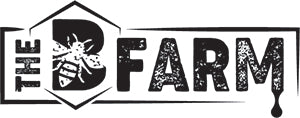Successful beekeepers know that proper preparation during the fall promotes a thriving hive come spring instead of devastating winter losses. The months leading up to winter represent a critical window for ensuring your colonies have everything they need to survive the harsh conditions ahead. Following a comprehensive fall beekeeping checklist to keep your hive healthy for winter ensures your bees enter dormancy with adequate food stores and proper ventilation from the elements that could prove fatal.
Evaluate and Supplement Food Stores
During winter, each hive requires between 40 to 60 pounds of honey to sustain the cluster until spring flowers begin blooming again. Check your frames for capped honey, paying attention to stores positioned above and around the cluster area where bees will form their winter formation.
Insufficient honey stores demand immediate attention through supplemental feeding. Sugar syrup mixed at a 2:1 ratio provides rapid energy that bees can process and store before cold weather prevents any feeding activity.
Assess Your Colony’s Population Strength
Colony strength serves as the foundation for winter survival. Strong colonies with adequate bee populations generate the heat necessary to maintain cluster temperatures throughout the coldest months. Walk through your apiary and evaluate each hive’s population by observing entrance activity and conducting brief internal inspections on warmer days.
Are you in search of strong, resilient, and high-quality honey bees and queens for sale to keep your hive thriving in the winter? Look no further than The B Farm! We take pride in providing healthy, productive bees that we breed to thrive and support your beekeeping success. Explore our collection today!
Implement Proper Hive Ventilation
Moisture management is crucial because poor ventilation traps condensation inside the hive, creating conditions that promote mold growth and chill the cluster when water droplets fall onto the bees.
Start by creating small ventilation holes near the top of hive bodies or use screened inner covers to promote air circulation. Avoid creating ventilation openings near the bottom of hives, as these can create drafts that force bees to work harder at maintaining optimal temperatures.
Secure Your Bees for Spring Success
Proper fall preparation transforms winter from a period of uncertainty into a manageable season that sets the stage for productive spring colonies. The time and effort invested in completing this essential fall beekeeping checklist will keep your hive healthy for winter and position your colony for another successful year of honey production and pollination. Act now to ensure your hives receive the care they need for successful overwintering and spring development.
